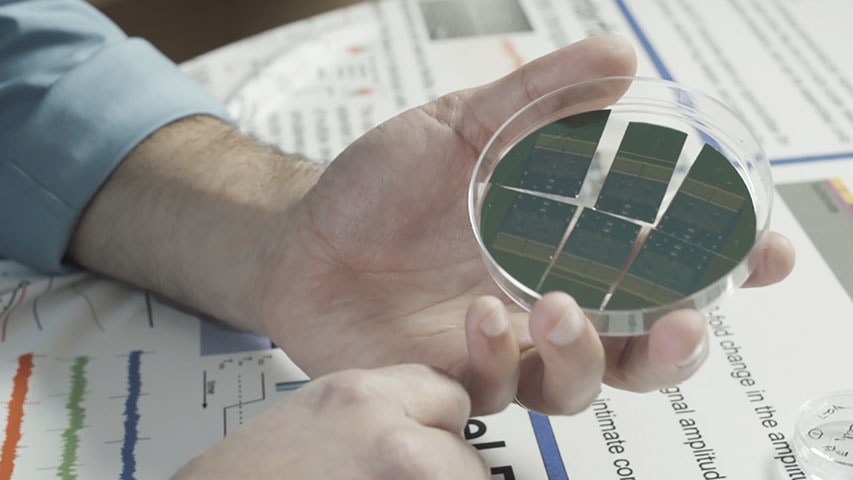Cohen-Karni Studies Electrical Activity of Neurons
His work is recognized by the Office of Naval Research
By Alexandra George
Imagine using the electrical properties of neurons to illuminate aspects of neural diseases. Imagine screening for drugs using the electric signals of the brain. Imagine devices better able to communicate with brain cells.
Carnegie Mellon University Assistant Professor of Biomedical Engineering and Materials Science and Engineering Tzahi Cohen-Karni is conducting the research leading to these applications. He recently was awarded the Office of Naval Research’s Young Investigator Award, which supports scientists and engineers who show exceptional promise for creative research early in their career.
Cohen-Karni and researchers in his lab are investigating the communication of neurons, basic units of the brain that transmit information to other nerve, muscle or gland cells, at the nanoscale level. The project is called, “Three-Dimensional Nanosensors Array For Measurement of the Electrical Activity of Microscale Human Brain Tissue.”
While many approaches exist for studying the electrophysiological signals of the brain, Cohen-Karni will take an approach that both complements and improves current methods.
“Think about a tiny bit of engineered brain with sensors embedded in it. Each sensor is a site. You keep it in a dish, and every so often you plug it in and record the signals,” Cohen-Karni said. “The challenge will be in the development of the platforms and the interpretation of the data we collect.”
Cohen-Karni and his team will develop a platform that can record and influence the electrical signals of neurons in three dimensions. Current methods involve bulky systems, such as glass capillaries (called patch clamp pipettes) used to record intracellular signals. Cohen-Karni’s approach will use smaller sensors to record signals from a smaller subset of cells, with mechanical properties closer to that of human tissue.
While the bulk of the work is yet to happen, Ph.D. students Sahil Rastogi and Anna Kalmykov are working on a graphene-based sensors and 3-D assembly.
“Now we are trying to bring the ideas from each direction and fuse them together,” Cohen-Karni said.
Cohen-Karni will collaborate with Associate Professor of Biomedical Engineering Ge Yang, who works on optical detection of biological processes with cells. Through their collaboration, they will be able to correlate the electrical signals of the brain with optical signals.
“Many things we do will be the inception of other things,” Cohen-Karni said. “Say we develop a certain device or sensor for this project, then we can use it for other applications, too.”
While serving as the groundwork for revolutionary bioelectronics research for the U.S. Navy, this technology will be used to fuse the biological world with the digital world, affecting the input and output of brain signals. It also will lead to new prosthetics that can restore motion and vision.
“Many current techniques only provide snapshots,” Cohen-Karni said. “You label a cell and fix it, and take it to the microscope. We are trying to have a way to continuously monitor a state of tissue. In theory it sounds easy to do, but it will actually take a long while to do this.”